 October 1, 2020 John E. Ross, KD8IDJ, Editor
| ||||||
Get Ready for the 15th Annual ARRL Online Auction! The 15th Annual ARRL Online Auction will open for an "early bird" preview and registration on Thursday, October 8, and will open for bidding at 10 AM EDT (1400 UTC) on Thursday, October 15. The The ARRL Online Auction also features a wide assortment of vintage books, including The ARRL Handbook, Radio for Everybody, and CQ Ghost Ship. This year, bidders will find a large variety of equipment, vintage books, novelty items, ARRL bundle packs, and a number of special items donated by the cast and crew of Fox Television's Last Man Standing, starring Tim Allen as Mike Baxter, KA0XTT.
Proceeds from the Online Auction benefit ARRL education programs, including activities to license new hams, strengthen Amateur Radio Emergency Service (ARES) training, offer continuing technical and operating education, and create instructional materials. Pandemic-Delayed ARRL 2019 Annual Report Released The 2019 ARRL Annual Report is now available in print and online. The publication's release was delayed as a consequence of the coronavirus pandemic. Print copies for members who are interested "Two of them -- On the Air magazine and the ARRL Online Learning Center -- signify steps taken toward the 'new generation of hams' that I've been talking about in the past few Annual Reports," President Roderick said. "They've been asking ARRL for help finding their way in amateur radio for so long, wanting to know everything from how to serve their communities, how to integrate the ham radio hobby and service with all the demands that modern life makes upon them, and even simply how to determine which parts of ham radio interest them." President Roderick also cited the development in 2019 of the ARRL Online Learning Center -- an array of online courses that will at first serve new hams and later expand to courses and materials for hams at all skill levels. The Online Learning Center is expected to launch in early 2021. "2019 was more than busy for ARRL -- it was productive and constructive," President Roderick concluded. "We're growing and
changing, and we do it all for you, the members, with an eye on our mission: to advance the art, science, and enjoyment of amateur radio." ARRL membership was essentially flat from 2018 at 156,755 -- likely a result of the membership dues increase in 2019, but still slightly above projections. The ARRL Volunteer Monitor Program was developed in 2019, replacing the Official Observers program. The new VM Program is a formal agreement between the FCC and ARRL in which trained volunteers will monitor the bands and collect evidence that may be used both to correct misconduct and to recognize exemplary on-the-air operation. The Report summarizes a raft of responses to emergencies and disasters by Amateur Radio Emergency Service (ARES®) volunteers. ARES membership grew by 3,130 in 2019, and a new ARES Comprehensive Plan was introduced. Financially, ARRL had a particularly good year in 2019, producing a $596,000 gain from operations, along with strong investment markets resulting in an overall net asset gain of $3.75 million. Read more. Former Dayton Hamvention Venue Hara Arena is Being Demolished Hara Arena, the former venue for Dayton Hamvention® and myriad sports, entertainment, and other presentations over the years, will soon be history. In the wake of a failed attempt to revitalize the tornado-damaged complex, officials in the city of Trotwood, Ohio -- where Hara Arena is located -- announced plans last week to "The complex suffered extensive damage during the 2019 Memorial Day tornado outbreak," a city news release recalled on September 25, taking note of hopes to salvage the complex. "However, redeveloping the property would be a challenge due to the extent of the damage, so the decision was made...to demolish the legendary venue." The city said the zoning change will allow manufacturing, distribution centers, and call centers to establish their businesses in the area. "We are excited for what the future holds for this property," Trotwood Mayor Mary McDonald said. "This is going to create some momentum for redevelopment," City Manager Quincy Pope told the Dayton Daily News. According to the Dayton Daily News, the property's owners have said the iconic marquee spelling out "Hara Arena" atop the main arena will be preserved and auctioned off, with the proceeds donated to charity.
Co-owner Corey Heitz told the Dayton Daily News that it will take up to 6 months to tear down the buildings completely, and he hopes to have "something" there in the next 12 months. Hara Arena had served as the venue for Dayton Hamvention from 1964 until 2016. Hamvention announced in July 2016 that Hara Arena would be closing but that Hamvention would continue. The show is now held at the Greene County Fairgrounds & Expo Center. Over its six-decade history, Hara Arena hosted concerts by performers that included the Rolling Stones and the Grateful Dead; it was also where hockey legend Wayne Gretzky played his first professional hockey game. ARRL Podcasts Schedule
The On the Air and Eclectic Tech podcasts are sponsored by Icom. Both podcasts are available on iTunes (iOS) and Stitcher (Android), as well as on Blubrry -- On the Air | Eclectic Tech. HF Station Grounding and Arduino Microcontroller Projects are Next ARRL Webinar Topics Two well-known ham radio authors and speakers will share their expertise with members in October during ARRL Learning Network webinars. ARRL Contributing Editor Ward Silver, N0AX, will present "Grounding & Bonding for Home HF Stations" on Tuesday, October 6, at 10 AM PDT/1 PM EDT/0500 UTC. Popular ARRL author Glen Popiel, KW5GP, will present "Welcome to the World of Arduino" on Silver authored the ARRL book Grounding and Bonding for the Radio Amateur in 2017 as a practical guide to building a station that incorporates effective grounding and bonding techniques for electrical safety, lightning protection, and RF management. Radio amateurs often cite the title for demystifying an often misunderstood or intimidating topic. During his webinar, Silver will define grounding and bonding, cover the benefits and requirements, and share useful references and guides for hams to apply these techniques in their home HF stations. In his presentation, Popiel -- the author of several ARRL books, including Arduino for Ham Radio, More Arduino Projects for Ham Radio, and High Speed Multimedia for Amateur Radio -- will cover the open-source, electronic-prototyping Arduino platform, which is widely popular among electronics hobbyists and radio amateurs. The webinar will include examples of how to put Arduinos to use in building ham radio projects and practical station gear. Live question-and-answer periods will follow each 30-minute presentation. All webinars are recorded, so members and radio clubs can view previous presentations. Join ARRL to take advantage of this new member benefit. Read more. Special Pricing on ARRL 5-Band WAS and Triple Play WAS Award Plaque Applications Beginning October 1, ARRL will offer a 10% discount on all This special is good for first-time applicants, as well as for those who have been awarded TPA or 5B WAS and want to display their achievement with an attractive, colorful wall plaque. Submit contacts via Logbook of The World (LoTW) and indicate in the comments section of the payment page that you want the wall plaque. Discounts will be applied during processing.
Uploading your contacts to LoTW provides quick contact confirmation and makes it easy to apply for these awards. The K7RA Solar Update Tad Cook, K7RA, Seattle, reports: Solar wind disturbed HF conditions over the September 24 - 30 reporting week. Average daily planetary A index rose from 5.1 to 22, while average middle latitude A index went from 5 to 15.6. Average daily sunspot number declined from 1.9 to 1.6; a weak sunspot appeared on only 2 days, September 23 and 25, with sunspot numbers of 13 and 11, respectively. Average daily solar flux was on the increase, edging up from 71.1 to 73.4.
Predicted planetary A index is 15 and 10 on October 1 - 3; 5 on October 3 - 10; 10 on October 11; 5 on October 12 - 19; 10, 18, and 20 on October 20 - 22; 24, 16, 38, and 38 on October 23 - 26; 26, 15, and 10 on October 27 - 29; 5 on October 30 - November 6; 10 on November 7, and 5 on November 8 - 14. W6MVT in southern California was pleasantly surprised on September 28 after erecting a new vertical. His first catch was E51JD in the Southern Cook Islands at 0022 UTC. This was his first SSB DX on 15 meters in many years, although the opening vanished as quickly as it came. Sunspot numbers for September 24 - 30 were 0, 11, 0, 0, 0, 0, and 0, with a mean of 1.6. The 10.7-centimeter flux was 73.6, 73.4, 72.6, 74.1, 73.9, 72.8, and 73.3, with a mean of 73.4. Estimated planetary A indices were 19, 20, 27, 24, 33, 16, and 15, with a mean of 22. Middle latitude A index was 11, 17, 18, 16, 21, 14, and 12, with a mean of 15.6. A comprehensive K7RA Solar Update is posted Fridays on the ARRL website. For more information concerning radio propagation, visit the ARRL Technical Information Service, read "What the Numbers Mean...," and check out K9LA's Propagation Page. A propagation bulletin archive is available. For customizable propagation charts, visit the VOACAP Online for Ham Radio website. Share your reports and observations. Just Ahead in Radiosport
WSJT-X Beta Release Introduces Digital Protocols Designed for LF and MF Bands The latest beta release of the WSJT-X digital software suite includes digital protocols particularly designed for communication on LF and MF "On these bands, their fundamental sensitivities are better than other WSJT-X modes with the same sequence lengths," the WSJT-X development team. "FST4 and FST4W do not require the strict, independent time-synchronization and phase-locking of modes like EbNaut," a protocol for VLF and LF communication. The WSJT-X development team said operators familiar with the software suite will find using FST4 and FST4W straightforward. The new modes use 4-GFSK modulation and share common software Message payloads contain either 77 bits -- as in FT4, FT8, and MSK144 -- or 50 bits for the WSPR-like messages of FST4W. WSJT-X version 2.3 offers 12 different protocols: FST4, FT4, FT8, JT4, JT9, JT65, QRA64, ISCAT, MSK144, WSPR, FST4W, and Echo. The WSJT-X 2.3 User Guide and the Release Notes include additional information. Read more. Announcements
Chinese Amateur Radio Satellite Launches Delayed CAMSAT says the CAS-7A launch has been postponed until next May, and CAS-5A until next June. "Because of COVID-19, many things have been delayed," CAMSAT's Alan Kung, BA1DU, told ARRL. He said an announcement would be made next spring.
CAS-7A will be placed into a sun-synchronous orbit with an inclination of 98° at 500 kilometers above Earth. The transponders will have a bandwidth of 30 kHz. The HF/HF linear transponder will uplink on 15 meters and downlink on 10 meters. A CW beacon will transmit on 10 meters. The HF/UHF transponder CW beacon transponder will transmit on 70 centimeters. The CAS-5A nanosatellite, with a 6U form factor, carries two HF transponders and two VHF/UHF transponders. While in orbit, it will deploy the tiny CAS-5B femtosatellite, weighing just half a
kilogram. The array of CAS-5A linear transponders will include HF/HF, HF/UHF, and VHF/UHF with 30 kHz passbands (except 15 kHz for the HF/UHF transponder). CAS-5A will include CW telemetry beacons on HF and UHF. The HF CW beacon will be on 10 meters, and a UHF telemetry beacon will be on 70 centimeters. Other beacons include the HF/HF transponder beacon on 10 meters, and the HF/UHF and VHF/UHF transponder beacons on 70 centimeters. Telemetry will be transmitted on 70 centimeters. Read more. Sterling Mann, N0SSC, Named IARU Region 2 Liaison for Youth Sterling Mann, N0SSC, has been named as the International Amateur Radio Union (IARU) Region 2 Liaison for Youth, the IARU Region 2 Executive Committee (EC) has announced. With the support of IARU Region 2, the Liaison for Youth will reach out to young hams throughout the Americas and their member-societies to develop and "Our first set of tasks primarily revolves around collecting information to identify strong leaders and points of contact throughout IARU Region 2 member-societies," Mann told ARRL. "Ideally, these leaders are young hams who are willing to help drive the initiative forward by performing various roles." One of those, he said, is to come up with and put into action methods to "get ham radio into the public view in a positive and engaging way." The initiative will also coordinate and collaborate with other communities with similar goals. On-the air activities, online meetups, workshops, competitions and mini-contests, brainstorming sessions, and speaking invitations are all envisioned as future events. "Amateur radio is often viewed as a passion of an earlier generation. Features that attracted many current hams, such as providing a real-time social network, have been supplanted by advances in technology virtually available to anyone anywhere," the EC said. "Wireless communication is an important aspect of modern life, with amateurs having the opportunity to experience it in a unique and personal way. Developing and promoting this experience is key to...ensuring the future of amateur radio." The Liaison for Youth implements a "Young Ham Action Plan" to connect with, engage, inspire, and mentor young hams throughout the Americas. Mann's role is to be a point of contact for building links to The liaison will help to set up, develop, and grow self-sufficient communities of young hams connected through common cultural, lingual, and geographic backgrounds, assisted by IARU Region 2 and its member-societies. This initiative builds on the successful examples of other youth groups, such as Youngsters On The Air (YOTA) in IARU Region 1, Youth on the Air -- a youth ham radio camp in the Americas, the Young Amateurs Radio Club -- a large online community of young hams, and several others. Contact Mann via email or Twitter (@r2youth). Read more. In Brief...
Upcoming ARRL Section, State, and Division Conventions Note: Many conventions and hamfests have been canceled or postponed due to the coronavirus pandemic. Check the calendar of canceled events on the ARRL website.
Find conventions and hamfests in your area. ARRL -- Your One-Stop Resource for . .
Subscribe to...
Free of charge to ARRL members...
| ||||||
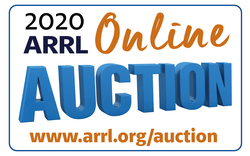 auction is sponsored by GigaParts. The 2020 ARRL Online Auction includes a large assortment of ARRL Product Review items, including an SPE Expert 1.5K-FA HF amplifier, ACOM 120S 160 - 6- meter linear amplifier, Yaesu FTDX101D HF + 6-meter transceiver, and an Icom IC-9700 VHF/UHF multi-mode transceiver.
auction is sponsored by GigaParts. The 2020 ARRL Online Auction includes a large assortment of ARRL Product Review items, including an SPE Expert 1.5K-FA HF amplifier, ACOM 120S 160 - 6- meter linear amplifier, Yaesu FTDX101D HF + 6-meter transceiver, and an Icom IC-9700 VHF/UHF multi-mode transceiver.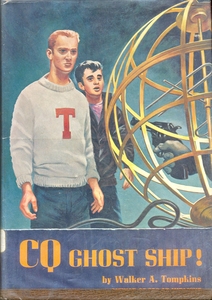 In order to place a bid, you must register on the ARRL Online Auction website. You may browse the website and scope out those "must-have" items without being a registered bidder, and you can register at any time during the auction. If you are interested in some great bargains -- and some great fun -- check out the 2020 ARRL Online Auction, which concludes on October 25 at 10 PM EDT (0200 UTC on October 26 in North America). Registration begins on October 8 at 10 AM EDT (1400 UTC) during the auction preview.
In order to place a bid, you must register on the ARRL Online Auction website. You may browse the website and scope out those "must-have" items without being a registered bidder, and you can register at any time during the auction. If you are interested in some great bargains -- and some great fun -- check out the 2020 ARRL Online Auction, which concludes on October 25 at 10 PM EDT (0200 UTC on October 26 in North America). Registration begins on October 8 at 10 AM EDT (1400 UTC) during the auction preview. 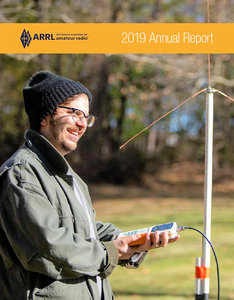 will be available soon. ARRL President Rick Roderick, K5UR, called 2019 "an exciting year for ARRL," with several new initiatives moving through planning and development for rollout in 2020.
will be available soon. ARRL President Rick Roderick, K5UR, called 2019 "an exciting year for ARRL," with several new initiatives moving through planning and development for rollout in 2020.
.jpg) raze the complex and rezone the property from commercial recreation to light industrial.
raze the complex and rezone the property from commercial recreation to light industrial..jpg) The Hara complex and the surrounding real estate occupy some 128 acres.
The Hara complex and the surrounding real estate occupy some 128 acres.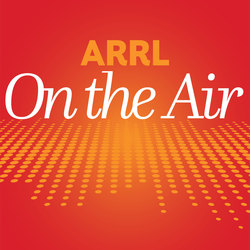 The latest episode of the On the Air podcast (Episode 9) features a discussion on how to tune HF signals and use transceiver tools to enhance reception. The On the Air podcast is a monthly companion to On the Air magazine, ARRL's magazine for beginner-to-intermediate ham radio operators.
The latest episode of the On the Air podcast (Episode 9) features a discussion on how to tune HF signals and use transceiver tools to enhance reception. The On the Air podcast is a monthly companion to On the Air magazine, ARRL's magazine for beginner-to-intermediate ham radio operators..jpg) The latest episode of the Eclectic Tech podcast (Episode 17) features a discussion of how RSID is used to identify HF digital modes, and a chat with Bob Allison, WB1GCM, about mysterious long-delayed echoes (LDEs).
The latest episode of the Eclectic Tech podcast (Episode 17) features a discussion of how RSID is used to identify HF digital modes, and a chat with Bob Allison, WB1GCM, about mysterious long-delayed echoes (LDEs). Thursday, October 15, at 5 PM PDT/8 PM EDT (0000 UTC on Friday, October 16). Members must log in to the ARRL website to
Thursday, October 15, at 5 PM PDT/8 PM EDT (0000 UTC on Friday, October 16). Members must log in to the ARRL website to 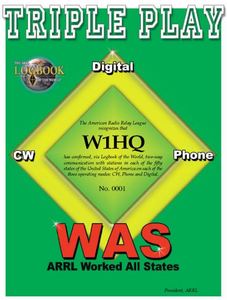 applications for 5-Band Worked All States (5B WAS) wall plaques and Triple Play (TPA) wall plaques. The discount will be deducted from the total charge (i.e., application fee, plaque fee, and shipping).
applications for 5-Band Worked All States (5B WAS) wall plaques and Triple Play (TPA) wall plaques. The discount will be deducted from the total charge (i.e., application fee, plaque fee, and shipping).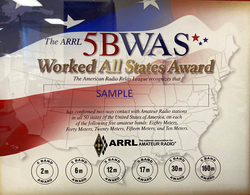 Apply online with the order forms available to order plaques for the
Apply online with the order forms available to order plaques for the 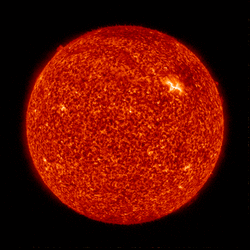 Predicted solar flux for the next 45 days is 74 on October 1 - 3; 72 on October 4; 70 on October 5 - 18; 72 on October 19 - 31, and 70 on November 1 - 14.
Predicted solar flux for the next 45 days is 74 on October 1 - 3; 72 on October 4; 70 on October 5 - 18; 72 on October 19 - 31, and 70 on November 1 - 14..JPG) bands, such as 2200 meters and 630 meters, and its developers say that during its first few months of testing, contacts have spanned intercontinental paths "many times" on those bands. New protocols
bands, such as 2200 meters and 630 meters, and its developers say that during its first few months of testing, contacts have spanned intercontinental paths "many times" on those bands. New protocols .JPG) for encoding and decoding messages. FST4 offers T/R sequence lengths of 15, 30, 60, 120, 300, 900, and 1,800 seconds, while FST4W omits the lengths shorter than 120 seconds.
for encoding and decoding messages. FST4 offers T/R sequence lengths of 15, 30, 60, 120, 300, 900, and 1,800 seconds, while FST4W omits the lengths shorter than 120 seconds.(1).png) Scouting's Jamboree on the Air (
Scouting's Jamboree on the Air (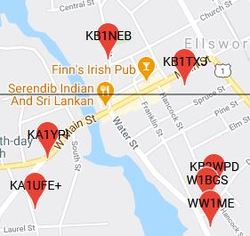 registered in advance will be considered as check logs. The 55th running of the CQP takes place October 3 - 4.
registered in advance will be considered as check logs. The 55th running of the CQP takes place October 3 - 4. 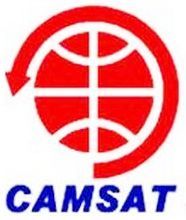 CAMSAT had said that CAS-7A would launch in mid-September; the launch has been postponed multiple times since first announced. CAS-5A was predicted to launch in October. Both satellites will carry two transponders that include HF, in a configuration similar to that of the Russian RS satellites decades ago.
CAMSAT had said that CAS-7A would launch in mid-September; the launch has been postponed multiple times since first announced. CAS-5A was predicted to launch in October. Both satellites will carry two transponders that include HF, in a configuration similar to that of the Russian RS satellites decades ago.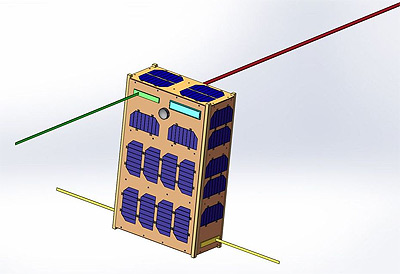
.jpg) promote interest in amateur radio on the part of young hams through self-sustaining groups and activities.
promote interest in amateur radio on the part of young hams through self-sustaining groups and activities..jpg) and among the many groups already developing organically via internet discussion platforms, on-the-air nets, and virtual clusters of interest -- even before the COVID-19 pandemic.
and among the many groups already developing organically via internet discussion platforms, on-the-air nets, and virtual clusters of interest -- even before the COVID-19 pandemic. Applications
Applications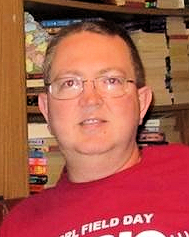 Stuart Wolfe, KF5NIX, has been appointed ARRL South Texas Section Manager. He succeeds Paul Gilbert, KE5ZW, of Cedar Park, who has stepped down as Section Manager
Stuart Wolfe, KF5NIX, has been appointed ARRL South Texas Section Manager. He succeeds Paul Gilbert, KE5ZW, of Cedar Park, who has stepped down as Section Manager 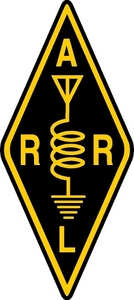 ARRL Member Chuck Butzin, K0BBQ, used ham radio on September 26 to assist a motorist in need. Butzin came upon a vehicle that went off the roadway. Fortunately, no one was injured, but a tow truck was needed to get the vehicle back on the highway. Butzin was beyond cell phone coverage, so he used the Terry Peak repeater to make a priority call on the
ARRL Member Chuck Butzin, K0BBQ, used ham radio on September 26 to assist a motorist in need. Butzin came upon a vehicle that went off the roadway. Fortunately, no one was injured, but a tow truck was needed to get the vehicle back on the highway. Butzin was beyond cell phone coverage, so he used the Terry Peak repeater to make a priority call on the 







